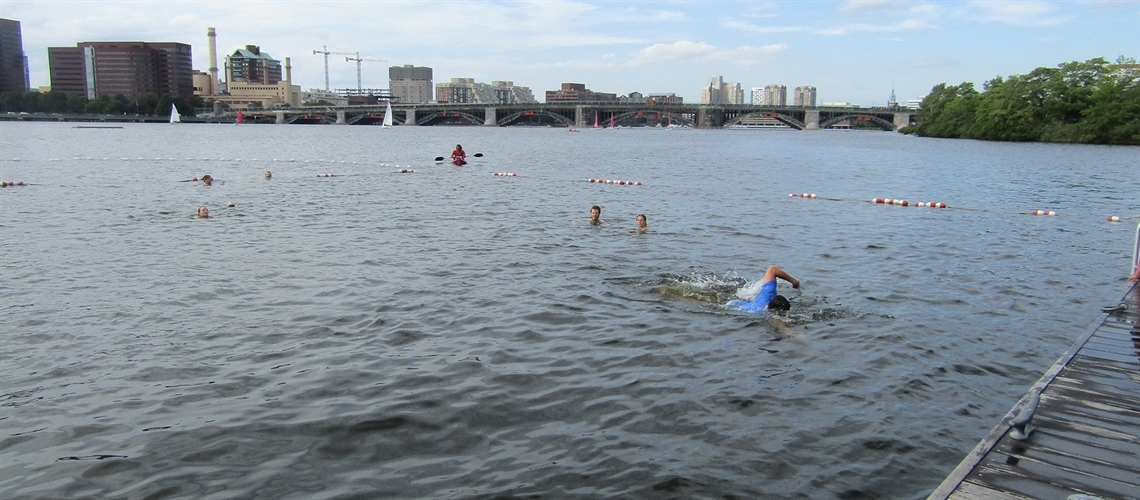Living
2030 Goal: Rivers we can swim in

Mass. Office of Energy and Environment
Boston's Charles River once faced water quality challenges like our rivers, but is now clean enough to swim in.
All of Chicago’s rivers will achieve the water quality standard set for them by the U.S. Environmental Protection Agency in 2011—primary contact waters that allow for safe swimming, paddling, fishing and more.
The successful completion of the Tunnel and Reservoir Plan—the Deep Tunnel—in 2029, coupled with supplemental water quality improvements, could nearly eliminate combined sewer overflows. Investment by the U.S. Army Corps of Engineers and MWRD on all our rivers, and especially on the Upper Des Plaines, will greatly reduce flooding, erosion and pollution. Widespread and substantial investment in nature-based stormwater infrastructure will further limit runoff to our rivers. Improvements at wastewater treatment facilities will drastically reduce nutrient pollution, limiting the overgrowth of algae and plants in our rivers. An ambitious program to cap, dredge or otherwise remove contaminated sediments throughout the river system will eliminate residual pollution. Instream wetlands in non-navigable stretches of the rivers further filter the water. As a result of the compound benefits from decades of investments, the water will be safe enough for swimming as consistently as it is in Lake Michigan.
And people will swim in it. Triathlons will use the Chicago River to take advantage of downtown spectating, with clean waters and a continuous riverfront trail for swimming, cycling and running. Ladders, ramps, pools, lifeguard stations and other infrastructure necessary for safe swimming will be installed in non-navigable areas of the rivers. On hot summer days, children in neighborhoods far from Lake Michigan will be able to walk down the street and hop in the river for good, clean fun.
Making it happen
- Ensure the Tunnel and Reservoir Plan—especially McCook Reservoir—is completed in 2029.
- Maximize the capture of sewage and stormwater to reservoirs and sewage treatment plants.
- Conduct a gap analysis of current plans to determine additional improvements needed in water quality and stormwater management.
- Implement in-pipe treatments to reduce pollution from combined sewer overflows.
- Fully implement the planned improvements for the Upper Des Plaines River.
- Conduct a study to prioritize management and remediation of contaminated sediments throughout the river system.
Key players
MWRD, City of Chicago Dept. of Water Management, Friends of the Chicago River, Shedd Aquarium, Ill. Dept. of Natural Resources, Ill. Environmental Protection Agency, U.S. Environmental Protection Agency, U.S. Army Corps of Engineers, Forest Preserves of Cook County, Chicago Park District, Chicago Harbor Safety Committee, Cook County, suburban communities, environmental advocacy organizations, property owners
Back to goals